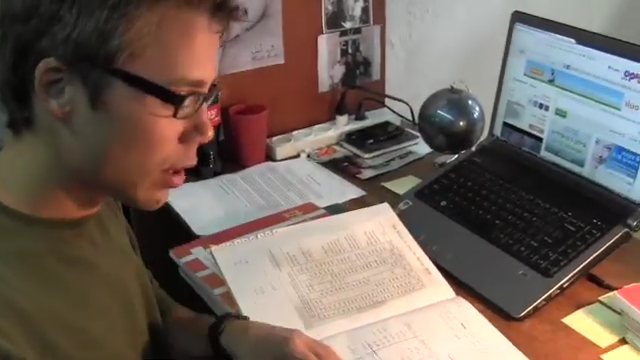⏱ Reading time: 3 minutes
Tenses, participles, and clauses—oh my! Have you ever been intimidated by the grammar principles you’re trying to learn in your target language? If so, you’re not alone! The idea of tackling grammar, especially that of a new language, can be intimidating and even discouraging for many.
Better understanding what grammar actually is can help you to realize that it’s not so scary after all. In fact, you’ll see that grammar is your friend.
The grammar of music
Let’s take a step back from language for a second. Think of a favorite song. What makes it so good? Maybe it’s the way the beat drops at the perfect moment, or how the strings in the background add depth to the singer’s soulful lyrics. Even if you’re not a musician, chances are you can feel when music works.
That’s because music, like language, follows a set of patterns—a grammar. By following the grammar of music, the artist(s) behind your favorite song created something that feels right, something listeners can enjoy.
You know grammar
Now that you know what grammar is, it’s important to realize that you’ve already mastered your native language’s grammar. Just like people without musical training know something’s off when a song skips a beat or the wrong note is played, you know what feels right in your native language, even if you can’t explain it. For example, see what you think about this sentence:
Store the to yesterday he go.
Even if you pieced together what this sentence is trying to say, you probably cringed while reading it. That’s because you know grammar, and that was an ungrammatical sentence. Even if you can’t articulate why, your grammar knowledge let you know that sentence didn’t work. You can probably even fix it:
He went to the store yesterday.
Hopefully you’re beginning to see that grammar is an old friend that has been helping you understand language for a long time. Your target language’s grammar is your friend too, waiting to help you make sense of the way the language works.
This doesn’t necessarily mean learning its structure will be simple. It may still be challenging at first, but you can do it. Keep persevering and remember to break difficult tasks and concepts into smaller, achievable goals.
Ryan and Hebrew grammar
Remember Ryan? In his capacity as Public Relations Coordinator at a non-profit in Jerusalem, speaking Hebrew well was a necessity. Part of speaking a second language well means knowing and internalizing its grammar. Although those who heard Ryan speak and give tours in Hebrew would have no idea, he once felt intimidated at the thought of learning Hebrew grammar.
His first exposure to Hebrew came during a trip to Jerusalem as a senior in high school. The language piqued his interest…until he picked up a grammar book. Flipping through the book, he was overwhelmed by all there was to learn. He concluded that there was no way he could ever do it and put the book down.

Had Ryan let the intimidation he felt in the face of Hebrew grammar win, he would have missed out on incredible opportunities that learning Hebrew would open for him. Instead, he was able to overcome this fear by focusing on the curiosity he still felt toward the language, which turned out to help him overcome his initial trepidations. This shift in focus reflects a growth mindset, which you can read more about here.
His desire to learn, combined with plans broken down into specific and achievable goals, enabled Ryan to learn Hebrew well. This didn’t mean that grammar became easy overnight, but he maintained the perspective he needed to persevere and take things one step at a time. With each challenge he faced, Ryan found ways to reframe, change his approach, keep moving forward, and find great joy in gaining deep insight into how Hebrew works.
Try it Out!
Time required: 1 minute
Pick a short passage from something you’re reading in your target language. This could be a dialogue, a short paragraph, even a few lines from your textbook.
- Underline any sentence you understand, even partly. Don’t worry about translating it perfectly. Just notice where the structure makes sense.
- Write down one pattern that you noticed. This might be word order, how verbs change, or something else. You don’t need to master it now—just notice it.
- Look at what you’ve underlined and written, and celebrate this little victory!